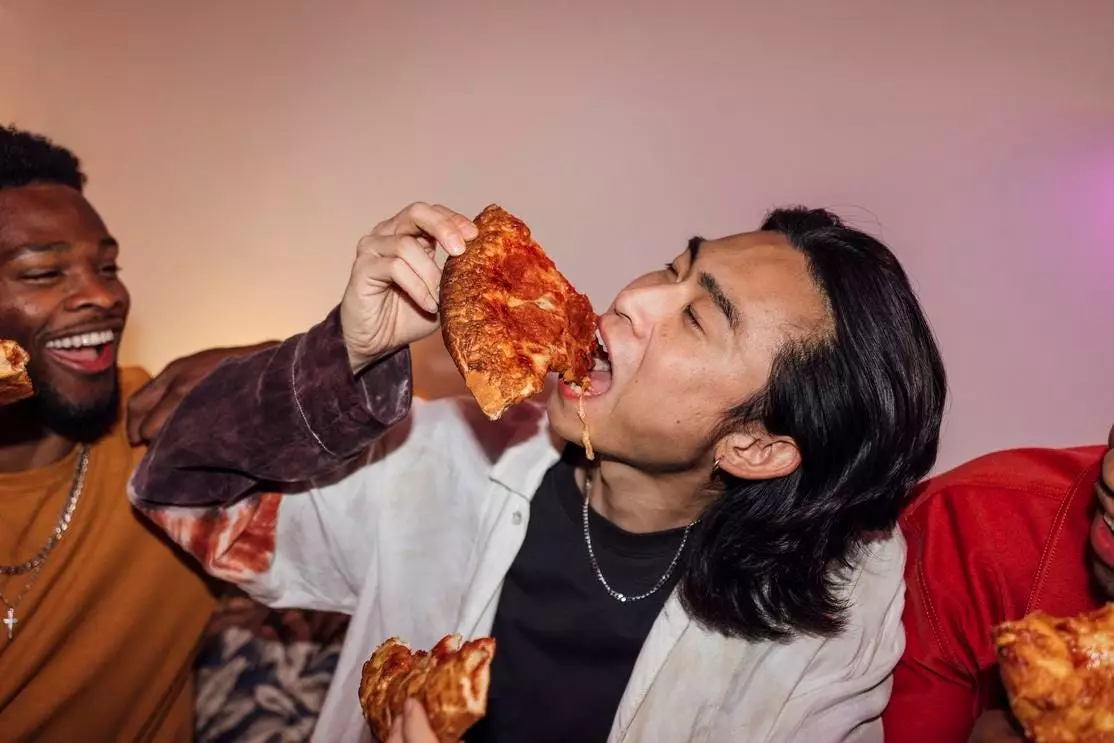The term „munchies“ is often tossed around casually in conversations about cannabis culture, evoking images of couch-lock while chowing down on snack foods. However, this phenomenon transcends simple indulgence; it is rooted deeply in biological and neurological mechanisms. Cannabis consumption activates the endocannabinoid system in the brain, heightening sensory perceptions, particularly smell and taste. Research has illustrated that THC, the primary psychoactive compound in cannabis, can stimulate the release of ghrelin, known as the „hunger hormone.“ This combination results in a heightened appetite that cannot merely be attributed to willpower but rather to a remarkable interplay of neurochemistry and sensory experiences.
Importantly, studies such as those found in reputable journals indicate that these cravings are not simply momentary lapses in self-control but are intricately tied to a reward system in the brain. Dopamine activity spikes in the striatum after cannabis use, prompting a strong desire for high-calorie, high-fat foods. It’s almost as if the brain is rewarding the user for indulging in the savories, creating a feedback loop that is powerful and compelling.
A Cultural Landscape of Convenience and Comfort
Fast forward to the contemporary landscape, where cannabis is not shunned but embraced by a significant portion of the population. In 2025, the relationship between cannabis consumption and fast food consumption paints a vivid picture of convenience and emotional comfort. According to surveys, a staggering 75% of Americans consume fast food weekly, with a noticeable uptick among Gen Z and Millennials. Why this growing trend? Cravings, instant gratification, and emotional reassurance guide these choices—an ideal trifecta for munchies-oriented eating.
On days like 4/20, when cannabis culture reaches an apex, fast-food options become more than just meals; they are experiences designed to cater to heightened senses and cravings. Fast food outlets masterfully align their marketing strategies with this behavioral shift, offering special deals and limited-time menu items that appeal to the senses. These initiatives are not merely promotional; they represent an understanding of the emotional landscape of the consumer, one that seeks comfort amid the chaos of modern life.
Changing the Narrative: Cannabis and Society
The cultural acceptance of cannabis has evolved markedly over the past decade, with public perception shifting toward normalization rather than stigmatization. Cannabis is no longer viewed solely through the lens of moral failing; instead, it is recognized as a measurable behavior that intersects with health, lifestyle, and food choices. The Global School-based Student Health Survey categorizes cannabis use alongside fast food consumption, underlining a societal trend toward integrating cannabis into everyday life.
This normalization is reflected in bold marketing tactics from food brands eager to reach this lucrative market. Companies are crafting campaigns that capitalize on the multifaceted relationship between marijuana and food, without overtly highlighting the connection. Promotions skew towards larger portions, indulgent toppings, and timely releases, especially late in the evening when cravings often peak. This strategy acknowledges not just the presence of cannabis consumers but also their emotional and practical needs.
The Broader Implications of Munchies Culture
Furthermore, the intimate connection between cannabis and eating habits opens up conversations about health. Contrary to some long-held beliefs, research suggests that cannabis use does not correlate necessarily with obesity; in fact, some evidence implies potential benefits such as lower diabetes risk among users. This nuance challenges the conventional wisdom that cannabis indulges unhealthy habits. It suggests a complicated picture of how users not only change their consumption patterns but may also reevaluate their relationships with food itself.
As fast food consumption soars alongside cannabis use, the demographic of munchies-oriented consumers extends well beyond younger age groups. It encompasses a cross-generational appeal, indicating an expansive market ripe for innovative products and brand messages. The cultural acceptance of cannabis has given rise to a new consumer group eager for snacks that are not just functional but also enjoyable and comforting.
The recalibration of how we perceive the munchies and their implications marks an exciting transformation. As we navigate these changing dynamics, the conversations surrounding food choices, cravings, and cannabis will only grow more vibrant and nuanced. Understanding the psychology behind the munchies can empower consumers to consider how they satisfy their cravings, ultimately leading to broader reflections on indulgence and health in everyday life.


Napsat komentář